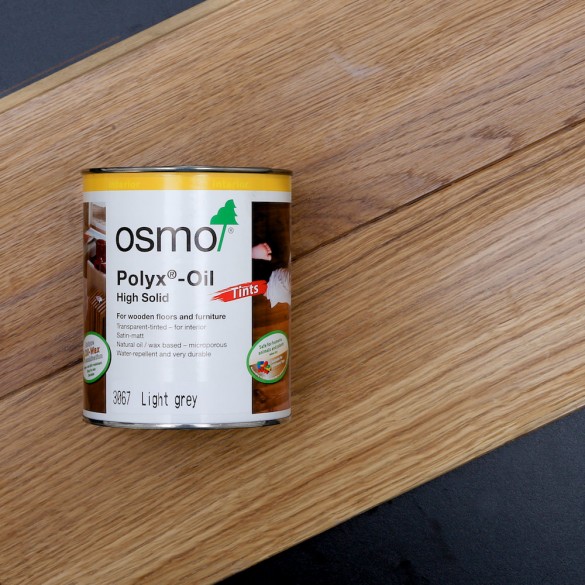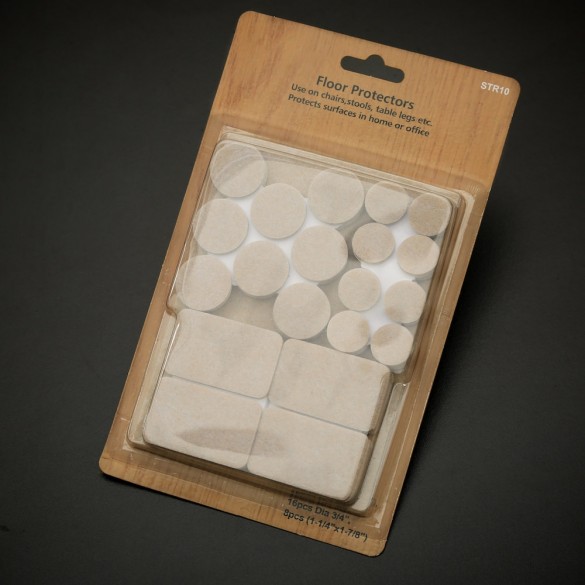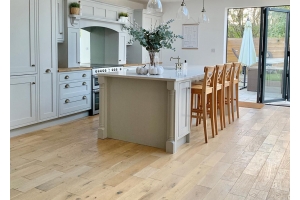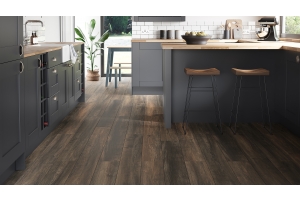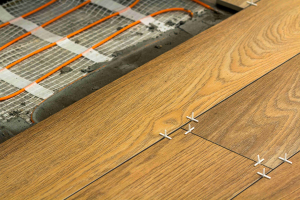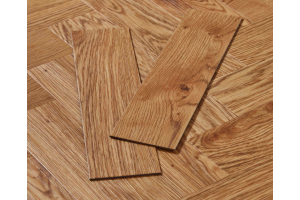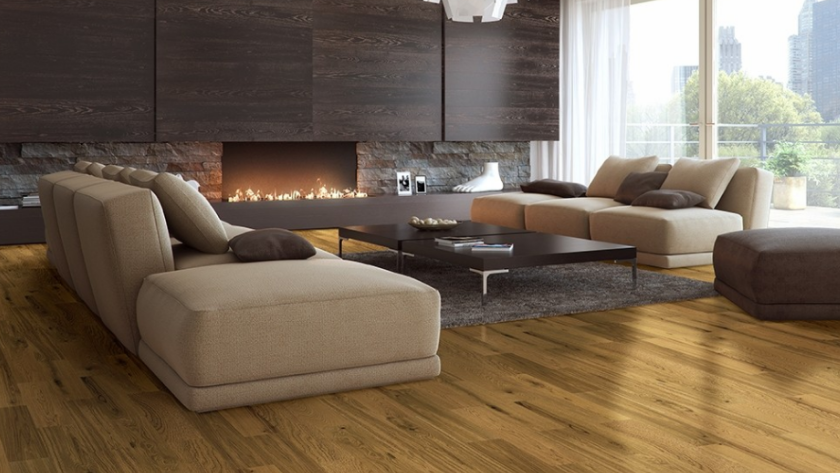
With all the wood flooring variations on the market today, consumers are certainly not short on choice. Whilst once upon a time solid wood was the only option, laminate, engineered wood and luxury vinyl tiles offer new options for every budget. But for some people, nothing compares to the real thing. So is solid wood flooring right for you? Everything you need to know about solid wood flooring can be found in this solid wood flooring guide.
Without further ado, let's get on with the ins and outs of buying solid wood flooring!
What is solid wood flooring?
Solid wood, often referred to as ‘hardwood’, is flooring made from a single piece of wood. In comparison, engineered wood and laminate is made from multiple layers of condensed wood pieces.
With planks differing in width, thickness and length, solid wood has many variations. This difference between ranges can be substantial.
Lengths can vary from 300mm to 2220mm; widths range anywhere from 92mm to 190mm; and thickness can be anywhere from 10mm to 21mm.
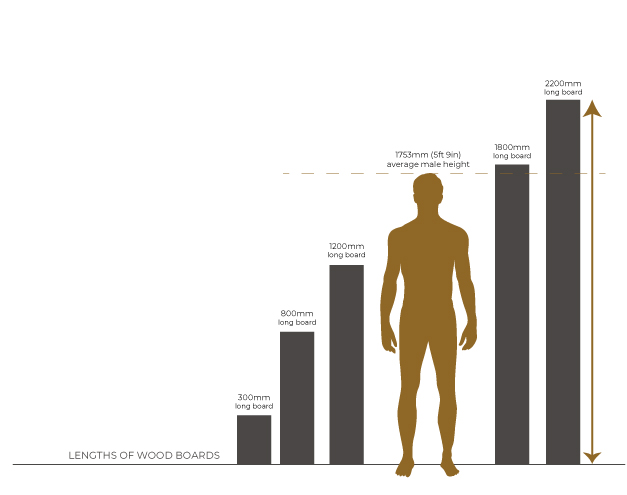
This huge choice should make finding your perfect flooring easy. And when it comes to style, the species of wood also plays a big role.
Different wood species offer differing levels of durability, as well as colour and grain pattern. For this reason, some are at the higher end of the price range, whereas some are more cost-effective. It all depends on budget and personal requirements.
How is solid wood flooring made?
Solid wood planks are milled from wood extracted from tree trunks. A single piece of timber forms the basis, before each plank is cut to the desired shape and then sanded.
Most solid woods feature a ‘tongue and groove’ fitting system. Designed for easy fitting, each plank fits together like a jigsaw piece. A protruding edge – the tongue – slots into a groove to create a secure fit between planks.
Some modern floors have a click system rather than tongue and groove, which makes for even easier fitting. Both planks simply ‘click’ into place through a unique mechanism for a tighter fit.
Once the boards have been made, manufacturers can either leave them unfinished or apply an oiled, matt or lacquered finish.
Wood oil is often used to alter the colour of the wood, whilst also adding an additional protective layer.
A lacquered finish gives the surface a glossy texture, which makes the floor easier to maintain and clean.
A matt finish is the opposite of lacquered, creating a non-reflective surface that highlight wood’s natural colours and protects against scratches.
As well as being lacquered, oiled or matt finished, floors may have additional finishes to give them additional character.
Smoked/fumed wood is exposed to fumes over a period of time, infusing the rich dark tannins of the wood through the boards.
Wood can also be whitewashed, which means they've been coated with a semi-opaque white stain. This highlights the wood's natural grains and adds a light finish.
Hand carved wood is expertly carved to create an aged, slightly uneven finish.
And finally, some wood flooring is brushed during finishing. This is where a wire brush removes softer grains of wood to accentuate natural grooves and textures. The removal of the softer wood also makes for a surface that's highly durable.
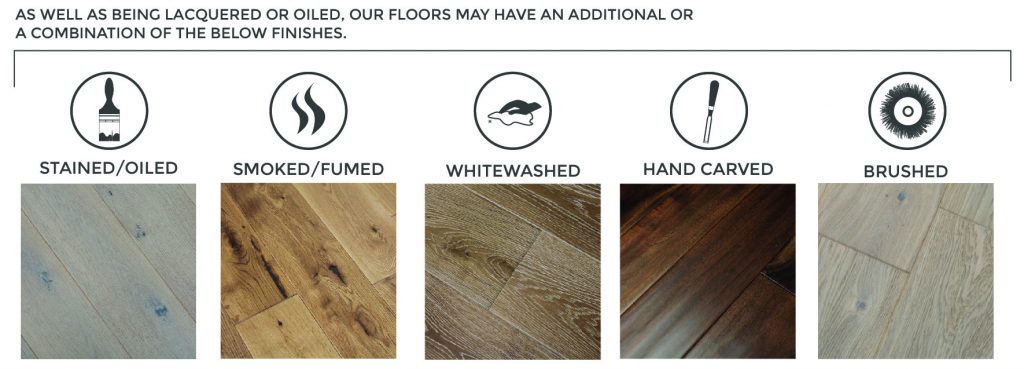
How is solid wood fitted?
Before fitting wood flooring, it needs to be left to acclimatise in the room it will be laid in. This allows the wood to adapt to its new environment’s temperature. Giving at least 72 hours prevents the wood expanding once it’s already been laid.
There are three main fitting methods when it comes to fitting wood flooring: Glue-down, secret nailing/screwing and floating floors.

When it comes to solid wood flooring, we advise against using a floating floor. This is an installation method best reserved for engineered wood and laminate flooring, as the flooring is not attached to the subfloor; hence the ‘floating’ name.
Solid wood needs to be fixed to the floor, therefore a floating floor would not be secure enough.
So how can you install solid wood?
You can glue your wood directly to the subfloor. Referred to as a glue-down installation, special adhesive is applied to a wood or concrete subfloor before laying the flooring on top.
If you’ve got a concrete subfloor, you should use a damp-proof membrane before laying your flooring. This prevents moisture from your subfloor damaging your flooring over time.
The second fitting method we’d recommend is secret nailing. This is where a nail (or screw) is driven through the tongue of a wooden plank. This then secures the plank to the subfloor.
The nail goes in at such an angle so that the groove will still fit over the tongue. The groove covers the nail, hence the name ‘secret’ nailing. This method is most effective with wooden subfloors, and allows the use of underlay if deemed necessary.
Fitting solid wood flooring yourself is possible – just ask Fran from ‘Fall for DIY’. However, if you’re not completely confident in your DIY abilities, we would recommend finding a professional fitter. You can find a tradesman near on using My Builder or Rated People.
Where can you lay solid wood flooring?
When buying solid wood flooring, an important factor to consider is room suitability. Wood flooring can be laid in any room in your home that doesn’t have fluctuating temperature or excess moisture.
Living areas such as dining rooms, bedrooms and living rooms are all ideal places for solid wood flooring to be fitted. It’s also a popular choice for staircases and hallways; we’d suggest opting for a solid wood with high durability if laying in either of these areas.
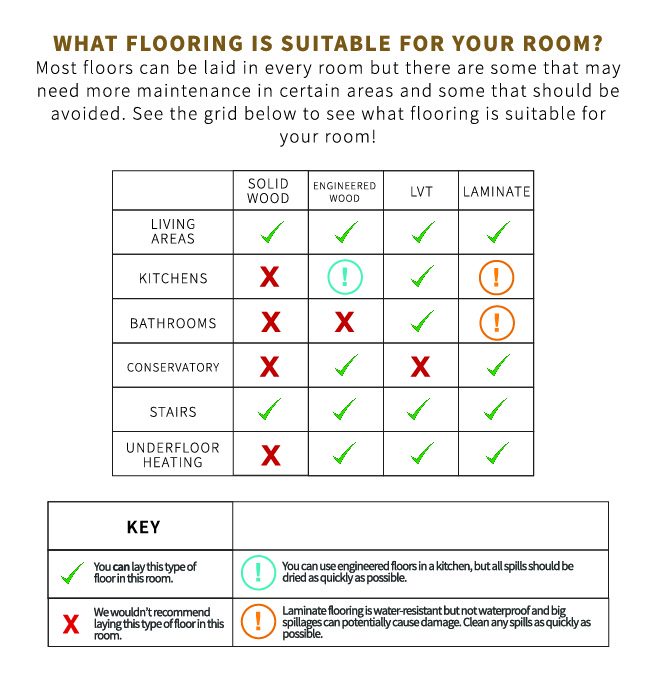
Whilst the beauty of a solid wood floor is often unsurpassed, it does come with its drawbacks. Because it’s made from one solid piece of wood, it’s more likely to be damaged by water and changing temperatures.
This means kitchens, bathrooms and conservatories are definite no-goes for solid wood flooring.
If you are looking to fit wood flooring in these areas, refer to the above flooring chart for the options available.
How to maintain solid wood flooring
Another thing to consider when buying solid wood flooring is maintenance. Much like all other woods, solid wood is relatively straightforward to maintain.
Keeping a wood floor dry is the most important factor in long-term maintenance. Water left on the surface can soak in and cause damage to the wood. In the case of any accidental spillages (which, let’s face it, are bound to happen), quickly clean up any moisture to minimise damage.
To avoid scratches, apply felt adhesive pads underneath the legs of furniture. This will prevent them from leaving any scuffs on a wooden floor as it moves.
To clean a solid wood floor, sweeping or vacuuming regularly should remove the majority of loose dirt. For tougher dirt, a slightly damp mop should be used. Note that this is damp, not wet. Again, avoiding excess moisture is key to your floor’s longevity.
For a deeper clean, an approved wood flooring cleaning kit should be used. Use this once a month in order to maintain a perfect look to your flooring.
If you have a lot of scratches or scuffs, you can always sand your flooring and then re-finish. This is a great option if you’d like to change the style of your flooring, as you can choose a different coloured oil if you desire.
How does its price compare to solid wood alternatives?
Solid wood may have a reputation of being expensive, but that certainly isn’t the case. Because of advancing quality in alternatives such as luxury vinyl tiles and engineered wood, the playing field has levelled out somewhat.
Laminate is the most cost-effective, with luxury vinyl tiles narrowly higher in terms of pricing in square metres (depending on whether you go for click or gluedown luxury vinyl flooring). However, both these ranges offer wide variety with up to £27m2 difference between the cheapest and most expensive ranges.
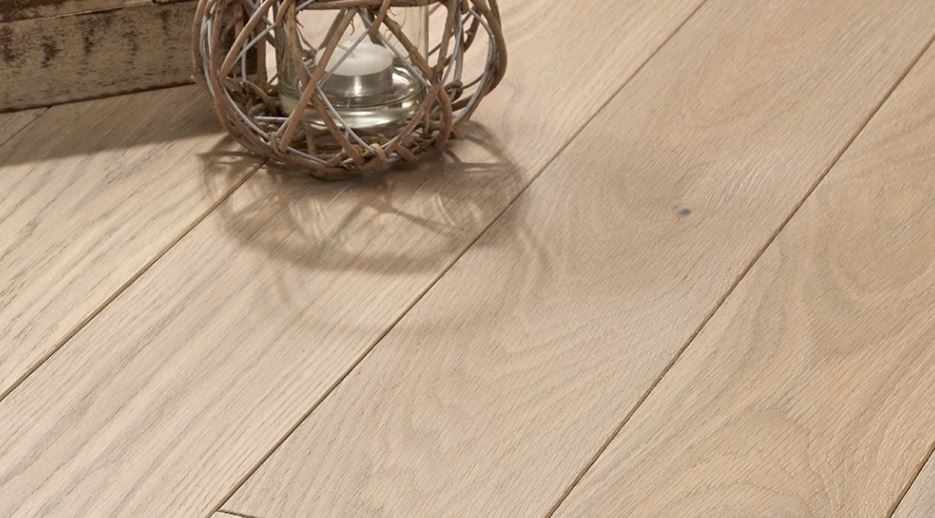
Both solid and engineered wood have a bigger range in price, with up to £100m2 price difference between the lowest and highest product lines.
Both the cheapest options for engineered and solid wood come in at below £45m2, which is often reduced further by regular sales and promotions making buying solid wood more price friendly and accessible to those working to a budget with solid wood needs.
Due to the huge variation in price points, there’s something for everyone no matter your flooring preference. Plus, our price match guarantee ensures you get the most bang for your buck.

Disadvantages of solid wood flooring
- Prone to damage from moisture and fluctuations in temperature, meaning it isn’t suitable for some places in the home
- Can’t use in a room with underfloor heating
- Can be more expensive than alternatives, however this is entirely dependent on the range and personal preference
- It can be more difficult to install yourself as it cannot be laid as a floating floor
Solid wood flooring benefits
- Aesthetically beautiful with a truly authentic look and feel
- Solid wood can last a lifetime with proper maintenance and care
- Can be sanded and re-finished to further increase its longevity
- Huge variety of species, dimensions and price points means an abundance of choice
- Solid wood flooring is incredibly durable, and can be made even stronger with the proper finish
- Incredibly easy to clean
- More hygienic than carpets, as dust and dirt isn’t trapped within fibres
- A solid wood flooring can sometimes increase the value of your home

Answers to common questions
There are many questions that arise when people are looking at buying solid wood flooring. Here we tackle a couple of the most common.
Can you use underlay with solid wood?
Yes, but only if you are laying over a wooden subfloor. If this is the case, you can use underlay and secret nail your wood flooring. The nail should go through the underlay and still effectively attach your flooring to the subfloor.
Is solid wood flooring suitable for use with underfloor heating?
Unfortunately not. The fluctuating temperatures of an underfloor heating (UFH) system will cause damage to solid wood. Heat makes the wood expand, which will then contract when the temperature returns to normal. This leads to warping and disfigurement of the wood flooring.
Why are wider boards more expensive?
Wide boards are cut form the middle of a tree. This means the wood itself is much cleaner, and is generally a higher grade of wood.
Is your wood flooring sustainably sourced?
All of our wood comes from sustainable forests across the globe. All of our woods hold authentic certificates of origin and chain of custody, from forests that are properly maintained with minimal damage to the local ecosystem.
Hopefully our guide has provided the information you need to get on with buying solid wood flooring successfully. However, if our solid wood flooring guide has provoked a question or two, leave it in the comments below, ask a question on our product pages or visit our FAQ page.
To speak to a professional about solid wood flooring options for your property, please get in touch, now.







